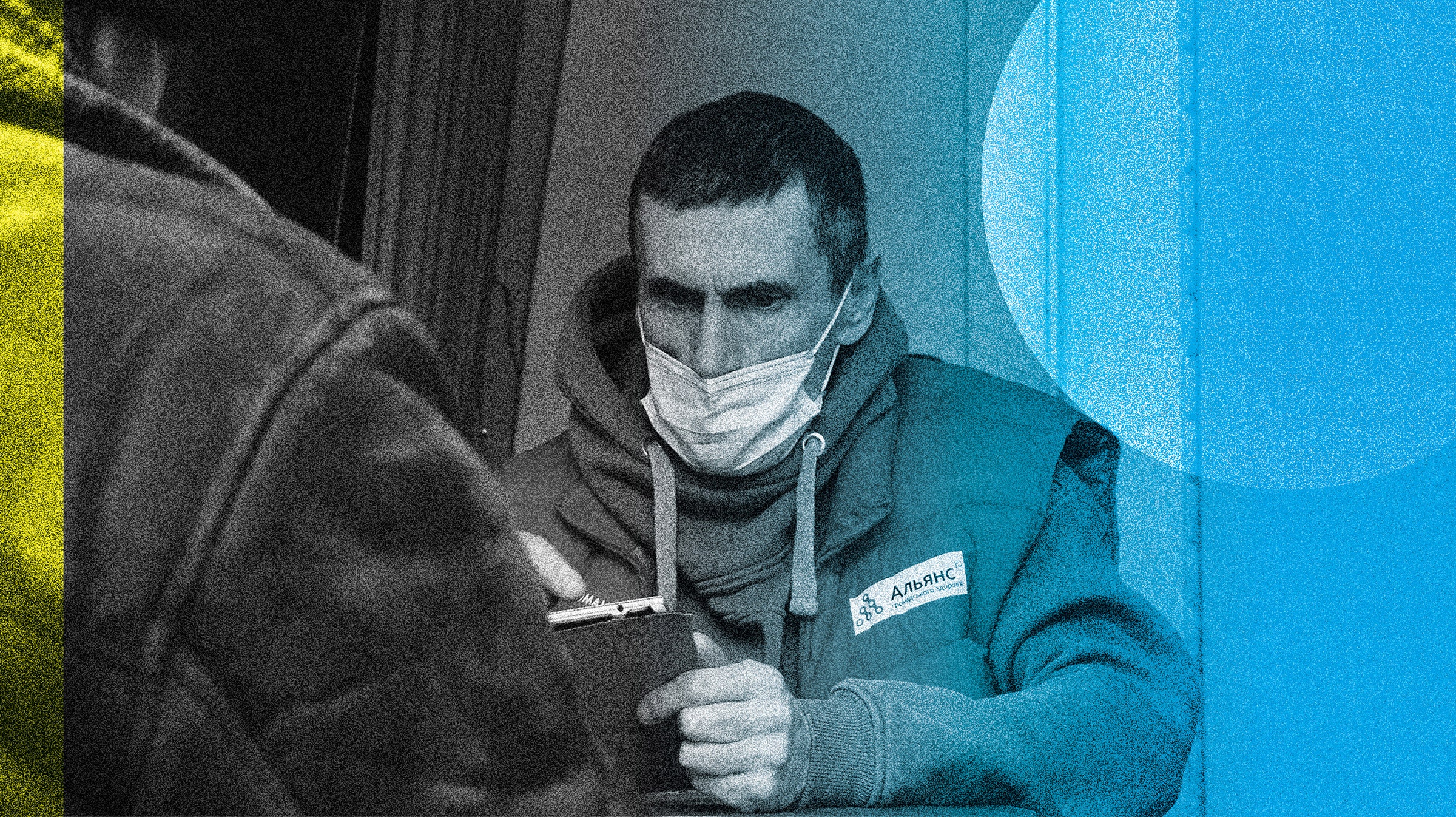
Doctors on Bikes Prevented a Humanitarian Catastrophe in Ukraine
Crouched on the bottom bunk bed of a shelter for internally displaced people on the outskirts of Kryvyi Rih, a city in central Ukraine, Mikhail counts himself among the lucky ones. Since the beginning of January, the 38-year-old has taken refuge in the ground floor apartment in the industrial city, miles away from his home on the eastern bank of the Dnipro River.
Mikhail, who asked to only be identified by his first name out of privacy concerns, began telling his story in late February by tracing a path across his face. Sunlight from the nearby window poured in, flooding the craters of his pockmarked cheek as he slowly dragged his index finger toward his dented jawline before pausing over his crooked nose. This, he says, serves as a permanent reminder of the day his home became a war zone. Less than a week after Moscow’s forces invaded the country on February 24, his neighborhood was surrounded. A soldier used the butt of his rifle to permanently maim Mikhail’s face. The man standing immediately to his right was shot dead. “It was one of the worst days of my life,” Mikhail says, gazing down at his hands.
Mikhail was brought to the shelter by Alexander Lee, a project manager with a local charity in Kryvyi Rih. Soon after Kherson was liberated in the fall of 2022, Lee began driving to outlying villages in an unarmored Honda Sedan, knocking on doors and visiting health care centers to track down vulnerable residents. He found Mikhail in a shelled-out village outside Nova Kakhovka, living without a home or documents. “I am here thanks only to Alexander,” Mikhail says. “He saved me.”
Lee saved Mikhail’s life in more ways than one. Mikhail is HIV-positive and has been taking the antiretroviral medications (ART) required to keep the infection from progressing to acquired immunodeficiency syndrome (AIDS) for several years. He, alongside tens of thousands of Ukrainians, rely on these treatments every day for their survival. While he feared that the war would cut him off from lifesaving treatment, international experts worried that the country as a whole had been exposed to an epidemic that could quickly become a humanitarian crisis. But thanks to civil society organizations and volunteers like Lee, who took extraordinary risks to get help to those who needed it, that catastrophe has—for now at least—been averted.
“Given the desperate circumstances, it could’ve—and very well should’ve—been much, much worse,” says Raman Hailevich, Ukraine country director for UNAIDS, the United Nations program on HIV/AIDS.
The early days after the invasion were chaotic, and officials and NGOs worked hard to impose order. Olga Gvozdetska, the acting deputy general director at the Ukrainian Ministry of Health’s Public Health Center, remembers dialing into a meeting with donors, community organizations, and government agencies from a gas station as she joined the 2 million-strong exodus from Kyiv during the first week of the full-scale war.
One of the most immediate needs was to organize the domestic supply of HIV drugs. “We had no national stocks, up to one month in some regions and just two weeks in others,” Gvozdetska says, adding that the ministry was facing a “total collapse” of the public health system. They had to make sure that each of their nearly 400 regional hubs had enough ART to last until the country received a new delivery from donors in mid-April 2022.

